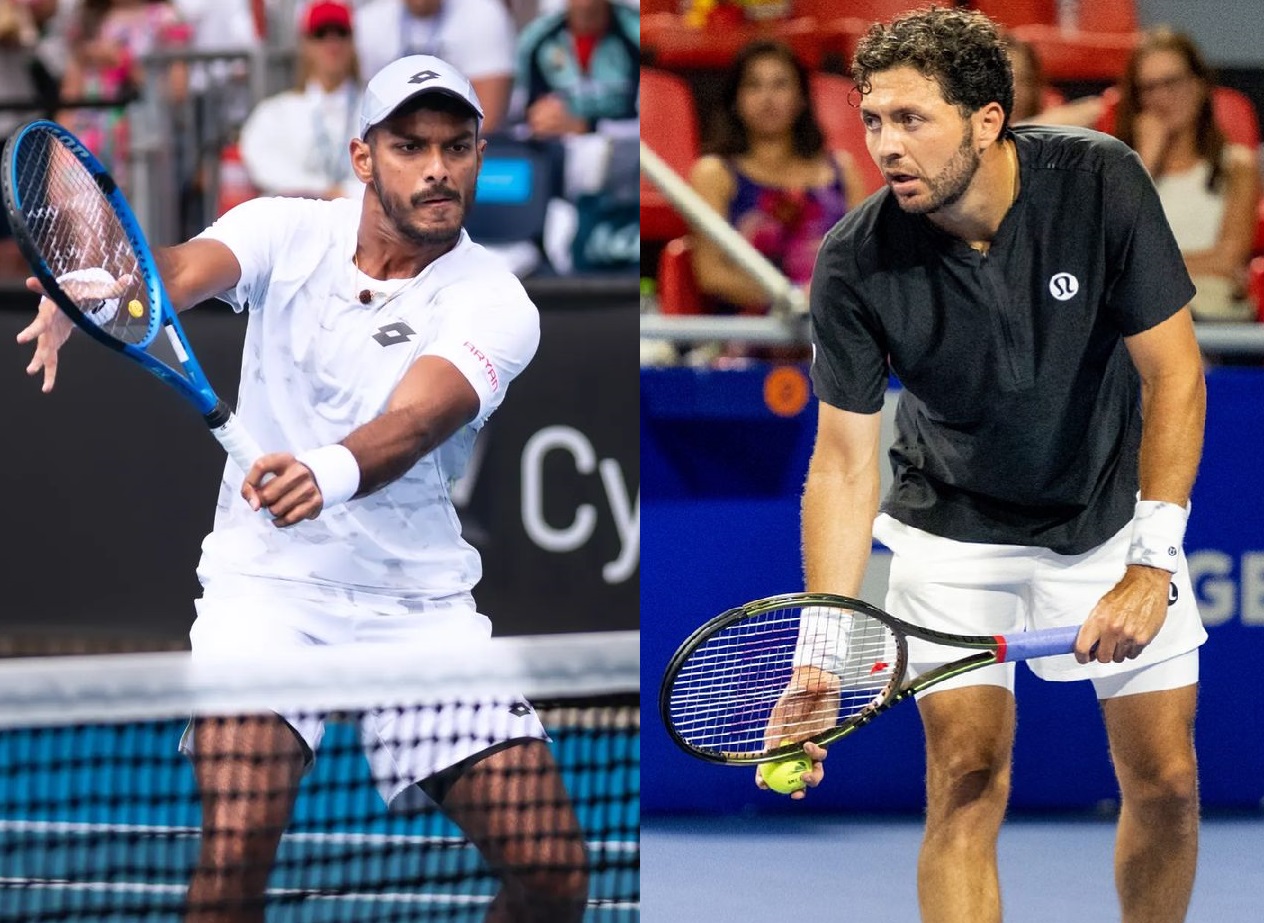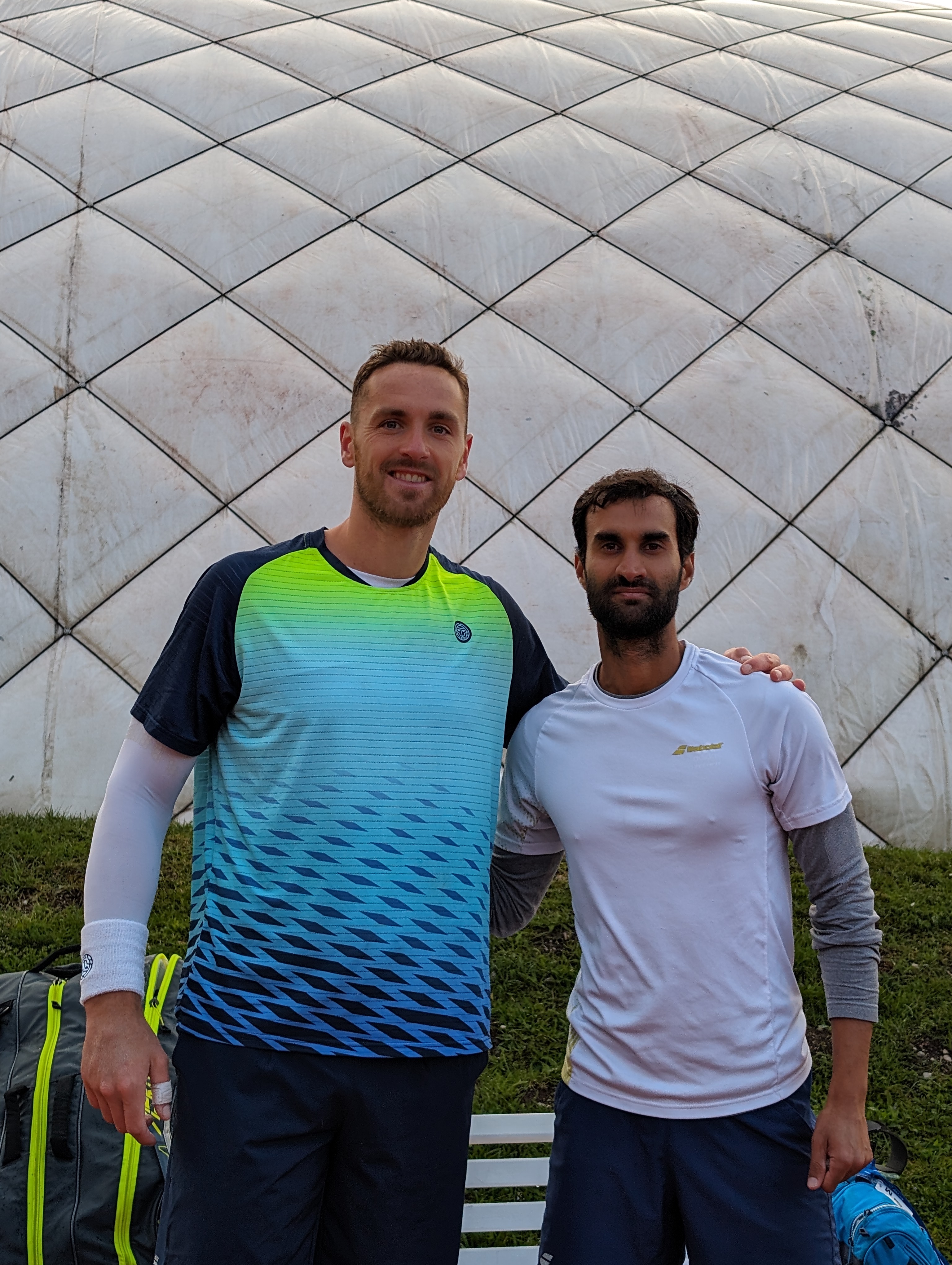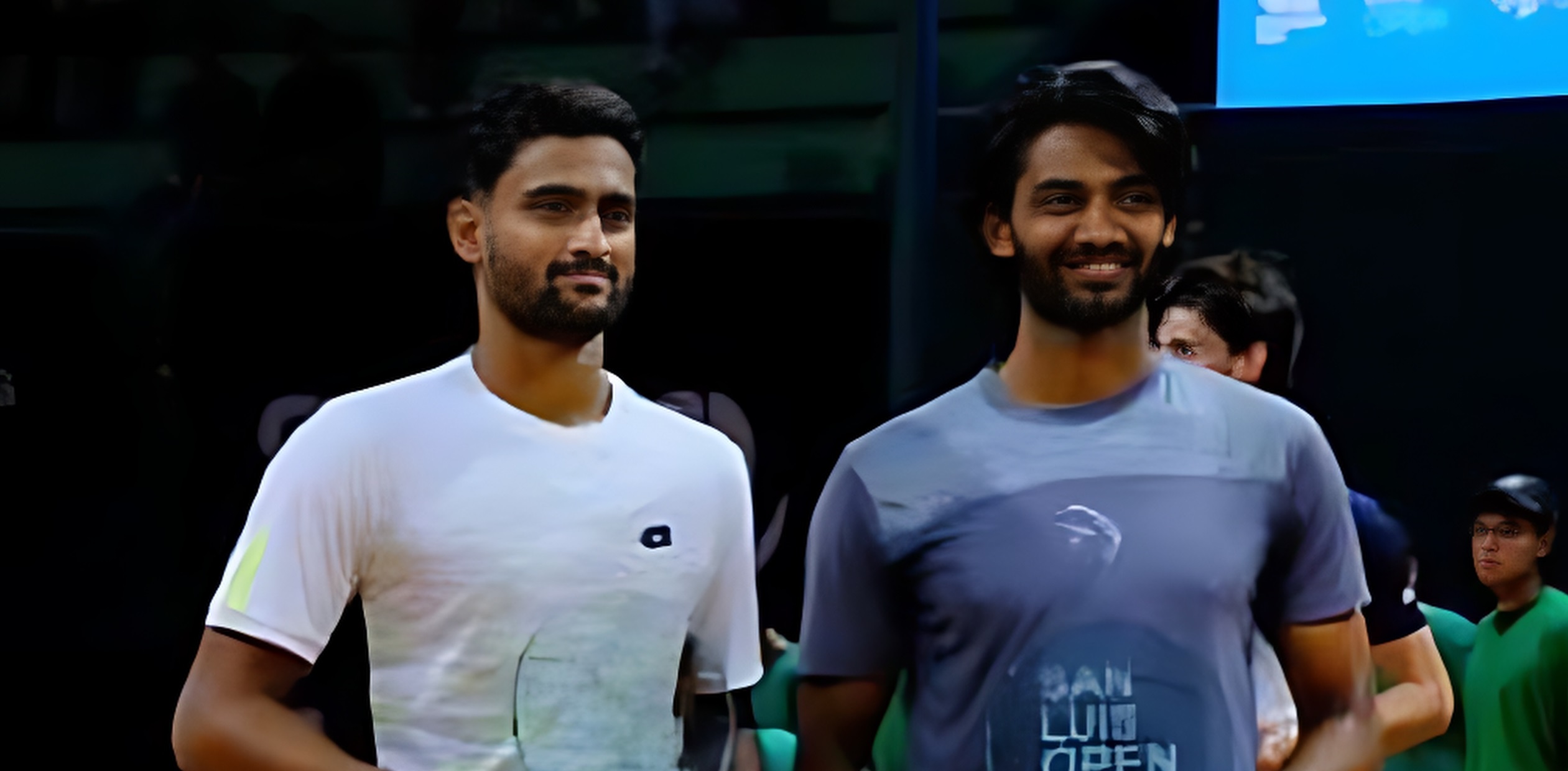Injuries, and fitness, or the lack of thereof have been issues that have been plaguing not just Indian tennis, but Indian sports for a long time. We, as the sports watching janta, often talk about these issues. But do we really understand them?
We caught up with physio, Yash Pandey, who works closely with several Indian players and runs Peak Performance, a physical therapy and sports rehabilitation company, to understand India’s fitness culture, how that contributes to injuries, his relationship with the Indian players, among several things.

Q) You did your M.Sc. in Sports Injury Management (Sheffield Hallam University). Could you tell us how you got interested in this field?
Yash: To be honest, I always wanted to be an athlete while growing-up, but then I couldn’t get into professional sports because my family background didn’t allow me to do that. They wanted me to focus more on academics. I thought getting into sports physiotherapy would be a good idea. It was also a profession where I thought I could do well and do justice to the area. That’s why I decided to do my M.Sc. in this field. After my M.Sc., I have gotten a chance to work with a lot of professionals. I did an assignment with the Sheffield United Football FC Academy whilst pursuing my M.Sc.
Q) How was the work you did with Sheffield United?
Yash: With Sheffield, I was with the academy and not with the main team. I was in the background where the injured players are placed. So the idea was to help with the rehab, formulate a rehab plan. I was not the main physio there, and was assisting the Head with this (rehab, and formulating a rehab plan) and working under him, which was great exposure for me. Sheffield United was a Second Division Club then. I think being in the Second Division in England is pretty big. The quality of work they do, the system they have, the infrastructure they have opened my eyes to a different world. I don’t think I’ve seen that in India even now.

Q) Did you come back to India to specifically work with Indian sportspeople?
Yash: I was never really interested in settling down outside India. I thought if I have to come back in the future, I might as well do it now because India is still a country where sports is growing. If I am able to establish myself now then it always makes sense. Whereas, If I came back 10 years later, then people would have already established themselves, and it would have been hard for me to find that place for myself. So that was the reason that I came back to India.

Q) What does your work typically entail with the Indian tennis players?
Yash: With tennis guys it’s different things on different days. I take care of their injury prevention. If they get injured, I manage their injuries. In tennis, players can’t travel with multiple support staff, unless you’re a Djokovic or a Federer. They(Djokovic and Federer) have separate massage therapists, separate strength and conditioning coaches, and separate physiotherapists. If you are not one of the top 5 singles players, they need someone who can take care of everything. So my job is not only to look after injury, but also to make sure they don’t get injured. If they get injured, then it’s done. I try to ensure I minimise injuries, if there are small niggles here and there, try and work on it so that we can solve it before it becomes a big issue, while at the same time taking care of their fitness.
During a tournament we try not to push too much in terms of training. It’s more of maintenance work, like light weight gym work or body weight work or exercising using bands. This is required to keep the body moving and ensuring that the body is healthy. On a typical day, we will have a practice session, prior to which I would be required to spend 30-40 minutes making them do their warmups, which includes mobility exercises, and activation work, and at the end of the practice doing a lot of cool down work, which includes stretching and foam rolling. This depends on how the conditions are as well. If it is too hot, ice baths are specifically done, when the facilities are available. The day usually ends with a sports massage as a part of the recovery plan.

Q) How did Peak Performance come about? Who are the players you currently work with?
Yash : I always wanted to open up a facility which would have everything that an athlete would require. That’s what we have. So at Peak Performance, we take care of sports injury management, we take care of injury prevention, we take care of recovery, we take care of sports specific strength and conditioning. At present Rohan(Bopanna) is one of the top guys we work with, whenever he is in Bangalore. We have a bunch of ISL football players. Most of them would come for their rehab post their ACL (Anterior Cruciate Ligament) surgeries which is the most common injury in football. If not, then they would come for their pre-season training wherein they’re not injured, but they want to boost their fitness.
Q) You’ve worked with Canadian players like Daniel Nestor and Vasek Pospisil, as well as Indians like Sumit, Rohan and Saketh. (a) what major difference do you see between Indian and foreign players in terms of the fitness culture and (b) in terms of the actual fitness itself.
Yash: The first Indian tennis players I started working with were Rohan and Mahesh. They were already in their 30s by then. So it was tough to implement anything new or or to implement a big change in their routine, as their bodies might not have accepted a drastic change. While with younger guys like Sumit, it’s easier to implement a new routine and push their bodies. I started working with the younger guys only after my experience with Pospisil and Nestor.
What I noticed personally working with Pospisil and Nestor was that they had a culture where as kids they were pushed. In India, among the older players, during the early days of their career, fitness meant doing 10,000 skips or going for a run. There was nothing specific to that particular sport. It was just a generalised thing. For them the idea is to start young and focus more on fitness, and try and make them athletes even before they are tennis players. So a lot of strength work goes in. In India what I see is most parents especially are hesitant for their kids to start on strength training early because they have a myth that the kids may stay stunted, and they might end up with some injuries. But you go see what the Americans and Europeans are doing with their 12 or 13 year olds, it’s unreal. That’s what yields results later on.
In terms of actual fitness, if your background is solid and you’ve started doing things young, then the levels are totally different. It’s tough to compare. Take the example of Sumit. He’s an Indian, but he has been trained in Canada. I have seen him from when he was 12 or 13. His fitness level is as good as a European or a Canadian. He’s been brought up in that environment where fitness is given a priority, not just the skill sets of tennis. Fitness is as equal as a skill in tennis. I think that’s the difference in terms of training methodology and also the mindset of people. In India, a technique or a skill is given more importance than fitness. But they don’t understand that you may be really good with technique, but you can go only a certain distance with technique. Eventually it’s your fitness that will take you forward.

Q) When somebody like a Virat Kohli places so much emphasis on fitness and talks about it, do you think it can bring about a cultural change?
Yash: When someone like a Kohli talks about fitness and sets an example about his fitness routines, I think the next generation of athletes learn. I think even the parents are taking that seriously. I work with a lot of young swimmers and badminton players who are all very focussed. Even a few parents, who are more exceptions than the rule, these days bring their kids when they are 12 year olds and they want to emphasise on specific fitness to that particular sport and not some general one. Parents and kids are becoming more aware of it.
Q) How different is it working with doubles players and singles players, from your perspective?
Yash: It’s a totally different ball game. When we are working with singles tennis players, there is a lot of physical demand. With doubles players, it’s not as much physical demand as a singles player. A singles player I’m working with is usually a young guy who is fitter and needs to push his body, and implement new fitness routines. A doubles guy is usually a little bit older and he is also trying to push his body, but it’s tough to implement new fitness routines. It is important to respect what your body can do, and slowly try and push the body so that some changes are done. At the end of the day, both have to be really fit. Take the example of Leander Paes, at the age of 47, he is pretty fit and does enough stuff to keep him moving on court. Then we see Sumit who does hours and hours of work on his fitness just to make sure everything is going well. Both have to work on fitness, but the way they go about it would be different.

Q) We’ve seen a lot of Indians whose careers have been cut short due to injury? Do you think that goes back to the question of a fitness culture or do you think there are multiple reasons for the same?
Yash: There are multiple aspects here. Fitness is definitely one of the main reasons. Even when it comes to fitness, there are important aspects like the form of the athlete while doing strength training. When you start training with the right form and technique, you are going to be much more effective in what you do and things are going to be a lot more smooth. Whereas if things don’t go well and there is a wrong kinetic change set in early in life, then it’s tough to correct it later. Those are the things that can lead to injuries. Not being fit can lead to injuries, but there are multiple factors, intrinsic factors like somebody whose joints are not as mobile as it should be. We are talking about different components of fitness, but if we are going into depth of what are the different reasons, then these would be the things. There are also extrinsic factors that we can’t control, like the surface you play on, when someone gets an ankle sprain or something. There are also micro-components of fitness like your mobility, your strength, your flexibility. Those are the reasons why somebody may or may not get injured.
Q) You recently travelled with the Indian Davis Cup team to Kazakhstan. How was that experience?
Yash: Davis Cup is always a fun event to go to, especially with the team. It’s an event we look forward to because it’s a team event. Otherwise tennis is an individual sport. When it’s a team you’re travelling with, it’s fun. I share a great bond within the team. Lots of fun we have on-court, off-court. It’s like a big family out there. So it’s fun travelling on Davis Cup duty.

Q) Learnings from interactions with various physios and trainers on Tour over the years
Yash: Overall travelling on the ATP tour is a great experience. Just by watching what Federer’s physio is doing while warming him up, or what Djokivic’s trainer is doing, will help you learn a lot. I think in the 5 years that I continuously travelled, I had a lot of great experiences. Obviously I knew what I was supposed to do. But then when you start getting inputs, you start picking up from different trainers and physios, it helps you refine your work, which is something you don’t see in other sports. In football or cricket, it’s you, your team, that’s it. You don’t get to interact so much, you don’t get to see other people’s work. In tennis, there’s a trainers room and 20 people working on their players at the same time. So everybody can see what is happening. Just watching those things makes you a better physio.

Q) I’m going to name a few players that you’ve worked with. Talk to us about them in a line or two.
About Sumit Nagal: I would say Sumit is somebody I love travelling with. We share a similar thought process. He’s more like a brother than an athlete I’m working for. For him I would go out of the way to help him out. I enjoy the weeks I’m travelling with him.
About Mukund Sasikumar : I haven’t worked so much with him. I’ve been trying to help him from a little far away, my other physios have been working closely with him. I think that kid has great potential. There are a few missing puzzle pieces that should be put in place and that would make him a complete player.
About Mahesh Bhupathi and Rohan Bopanna : Rohan and Mahesh were the ones I worked with when I started my career in the tennis scene and I will always be grateful to them. They were the ones who gave me the opportunity. Especially Mahesh, when he picked me in Mumbai and approached me to travel with him. When they were a team, I really looked forward to travelling and working with them.
With Rohan it’s not just an employer-employee relation, he is more like family. He has helped me settle down in Bangalore, and helped me with a lot of things.
About Divij Sharan: Divij is one of the hardest working players I’ve seen. Definitely one of the most disciplined Indian tennis players. He is where he is because of his work ethic and discipline more than anything else. I still remember in 2013, he had a bad hip pain. I went to Delhi and stayed in his house for almost a month and a half, and sorted his hip pain. I put down a programme for him. I met him after two years and noticed he was still doing those exercises. I felt pretty good about myself, and felt good that he was continuing to do it and not having any complaints about that injury.
About Saketh Myneni: A very genuine guy, so down to earth, someone you can always rely on.







Leave a Reply